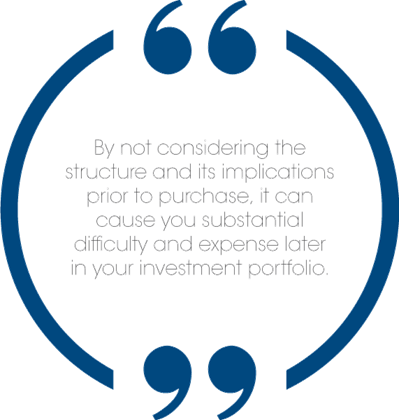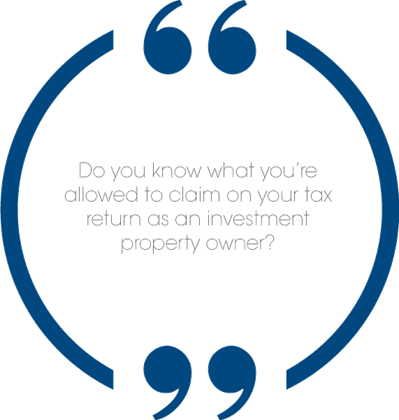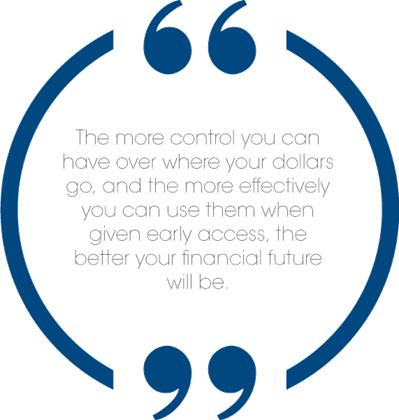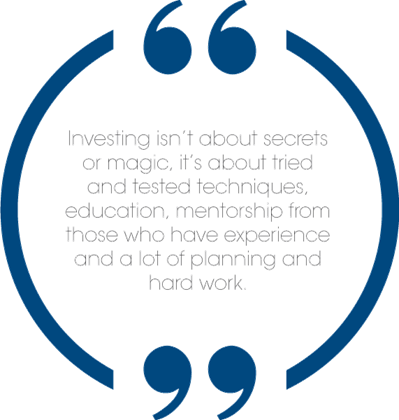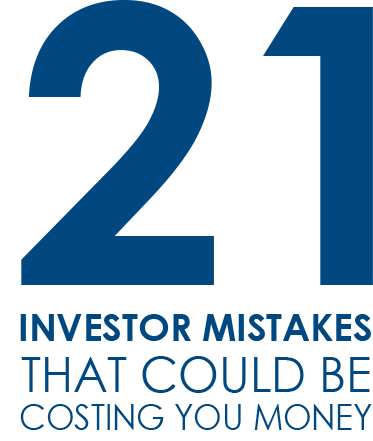 The common mistakes made by novice and experienced property investors.
The common mistakes made by novice and experienced property investors.
Every investor is purchasing property to get a strong return for the funds they pour in. The entire idea of property investing is to set yourself up financially with real estate assets. It’s therefore hardly surprising that anything you are doing that costs you money unnecessarily, or causes you to lose it, should be on the top of your list to fix.
Remember that any savings you make now can be reinvested later or used to pay down some of your current loans. Despite investors becoming increasingly educated, there are still common mistakes made by both novice and experienced buyers. These range from issues with property management to due diligence, but can all add up to potentially significant losses each financial year.
We’ve covered 21 mistakes that you will want to double check, and rectify as soon as possible if you’re making these blunders.

#1 Not keeping your rent in line with market value
If you don’t have a property manager who is keeping a close eye on all aspects of the property market, there is a possibility that you could be under charging your tenant.
While it’s always important to increase rent in a fair manner, and local tenancy laws will define the acceptable increments of increase for rent and when this can be done, you could easily be losing hundreds of dollars a year of potential income from your investment property.
Your property manager should have access to all of the required data services to determine what is a fair market price for your property and this information should be provided to you either when the property is on the market for rent or during a lease renewal negotiation. For those who are not using a property manager, you may be making only short term savings. If you do not have the necessary experience and time to do this complex role, then it may actually be a false economy.
Skilled, carefully selected property managers can assist with quick repairs and maintenance that can stop problems from occurring in the long term. Having someone astute to watch over your investment property should allow you to not only rest easy, but to also be alerted to any issues with the tenant early on.
A good property manager will keep you up to date with potential rental increases and it is worth checking in with them about their insights into the local market and for any tips on how to push that rent the highest possible fair market price.
You can even ask whether any additional items, such as air conditioning or fly screens, will make your property more attractive to tenants or more likely to attract a little more rent.

#2 Buying property in the wrong structure
For many, it seems natural to purchase a property in their own name however this isn’t actually the only option available. In fact, not considering the structure and its implications prior to purchase can cause you substantial difficulty and expense later in your investment portfolio.
If you’re looking to minimise your tax and to protect your assets then you may want to consider purchasing in a company or trust structure. You may also hear of this being called the “investment structure”. As companies are taxed 30% on their profits, while individuals are taxed at their income rate, this will not work out for all investors.
When estate planning, you must speak to your accountant to ensure you don’t structure your purchases inappropriately. This is particularly important if your investment goal is to pass the assets along to your children, as trusts can be particularly handy to avoid transfer costs later in your life.
Consider the following structures, in consultation with your accountant and/or legal advisors:
- Individual
- Joint tenants (often also called partnerships)
- Company
- Trusts (Discretionary, unit or hybrid)
#3 Ignoring your equity
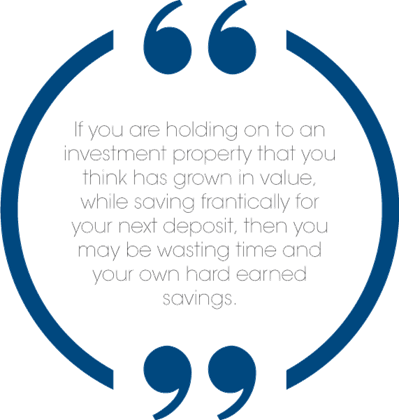
If you are holding on to an investment property that you think has grown in value, while saving frantically for your next deposit, then you may be wasting time and your own hard earned savings.
Using the equity from your first property’s growth to fuel your next investment is a time saving step that allows you to benefit from your initial asset. Of course, if the area hasn’t grown in value then you will find yourself needing to consider a renovation, a longer wait or back to the traditional savings.
Often, investors and homeowners will sell their property to realise the profit. In fact, refinancing and using the equity can be a far more effective prospect – allowing you to avoid capital gains tax and hefty outlays when selling your property.
It also means that you can build your portfolio and allow yourself to realise future growth on both of the investments.
#4 Not claiming all available deductions
Do you know what you’re allowed to claim on your tax return as an investment property owner? If not, it’s time to find out. Often due to lack of knowledge and sometimes a lack of organisation, landlords can forget about some of the easiest ways to ease the financial costs of holding an investment property, particularly a negatively geared investment.
From depreciation schedules, and updating them when a renovation has occurred, to education materials, there are a number of things that can be claimed. Speak to your accountant and save copies of every receipt or expense.
You may also be able to claim for pre-paid interest up to 12 months in advance. This can be especially beneficial if you are on a higher income for the current financial year and expect to see a drop in the subsequent financial period.
A note about depreciation: Not all quantity surveyors and their depreciation schedules are made equally. It is worth having a quality schedule undertaken to ensure you claim back the most possible for your investment. For many, this will involve them visiting the property. You may also be able to backdate the schedule by up to two years.
While older properties arguably have less of a depreciation benefit than newer properties, there is usually still a substantial amount you are able to claim – particularly if they have been renovated.
Some companies include guarantees that if the schedule costs more than you will be able to claim in your first year, they will not charge you.
#5 Trying to pick the “best” time to buy

It’s often called “time in the market not timing the market”. A quick way that many investors lose money upfront in real estate is purchasing into the market when it’s too hot or buying in too early, but too much procrastination over the timing and short term windfalls can put you on the back foot.
‘Buying in’ when a market has already been through a lot of growth means that you may have missed out on the best years of capital gains. ‘Buying speculatively’, such as purchasing due to the rumour of a mine, may leave you with an asset that never performs due to a delayed or never eventuating project.
Trying to pick the top and the bottom of the market invariably doesn’t work, although it is crucial to keep an eye on market movements and aim to avoid buying when it is generally too hot or on a downward swing.
The best investors purchase for the long term and acknowledge that even if they buy in on the ‘downward swing’, in the majority of steady safe areas “time in the market” will see it through.
#6 Choosing your experts based solely on fees
When picking an expert to work with, either for renovation work around a property or a buyer’s agent or even a selling agent, one of the worst things you can do is rely on the fees.
You get what you pay for and usually, you will find that scrimping in paying those who work to better your investments will see you lose funds in the long run. A classic example is choosing a buyer’s agent on the cheap, saving yourself a few thousand dollars, only to have them overpay for a property in an area that’s not terrific.
Even if the area grows in value, you’ve potentially lost money from the alternative of buying somewhere better and at a discounted price. While some lower fee experts doing simple routine tasks may be able to be hired on the cheap, be aware of the risks.

#7 Structuring your loans incorrectly upfront
Structuring your loans in a way that is mismatched to your strategy can cost you big time. Flexibility and tax are two crucial aspects to look at. If you need to refinance with little notice to get into another investment that has come up, you could find yourself paying in opportunity cost should your loans not allow this.
While ‘cross collateralising’ may work for some investors, others will find that if they want to go and take out equity to borrow more than 80% for an investment property, and your loans are crossed, then you may be charged Lenders Mortgage Insurance (LMI) on all of the loans. This is an amount that costs thousands of dollars and could be avoided with some upfront planning.
#8 Repaying less when rates drop

Fixing your loan when interest rates are low can provide you a number of overall savings. While the fixed rate may be a little higher than the current variable rate, when rates start to be hiked again then you have regular repayments at a lower rate.
If, however, you have a variable rate then you have the benefit of being able to pay a lower amount when the rates decrease. Astute investors will continue repaying their loan at the higher amount – increasing their equity, reducing future repayments and saving themselves thousands of dollars in interest.
#9 Failing to diversify your portfolio
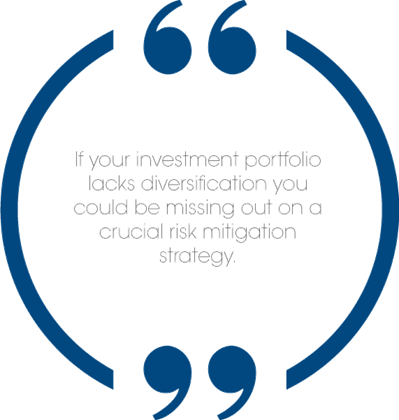
Many investors are most comfortable buying in the area, or state, where they already own their home and possibly other properties. While it’s true that you likely know that area better, the downside is that your investment portfolio lacks diversification which is a crucial risk mitigation strategy.
Diversification involves buying different assets in different locations, as well as potentially looking at different investment types. If the area you have purchased in does not do well, then you risk losing on all of them. You may find the rental market plummets and all of them may be vacant at once. Another way that not opting to diversify can damage your bottom line is through land tax.
Calculated by state or territory, know the cap on land tax and when it may suit to look elsewhere. You can find the latest land tax rates at your state or territory’s Revenue Office.
For instance, as of writing, New South Wales’ threshold is $432,000 (excluding your principal place of residence) at which point you are charged $100, plus 1.6% up to the premium threshold. The premium threshold is $2,641,000 and over, when you see yourself charged $35,444 and then 2% for any funds in excess of that amount.
#10 Misunderstanding the use of LMI
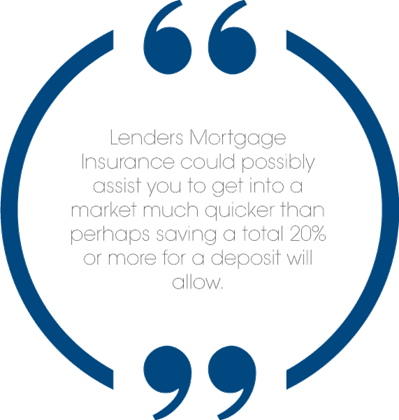
For some people, Lenders Mortgage Insurance (or LMI) can be a benefit. It can assist you to get into a market much quicker than perhaps saving a total 20% or more for a deposit will allow. If the market is likely to increase over time, and you’re hoping to avoid chasing the rising house prices, then getting in on the upswing can be a benefit. However, if you can avoid it then you will also save yourself the cost of the LMI and that can be substantial over time.
For someone buying a new home for $400,000 with a $380,000 loan, the LMI premium can be around $12,500. This can be included as higher monthly repayments. This amount varies from provider to provider, and the amount will be decreased if you have a higher deposit. However, if you don’t think the area is going to grow by $12,000 in the time it takes you to save a further 15%, then it may be worth considering holding off purchasing.
Understanding when it should and shouldn’t be used is crucial for investors.
#11 Signing up for all the “bells and whistles”
When you’re taking out a loan, you will often be introduced to concepts such as lines of credit, waived loan application fees, deferred payment options and other features that are regularly unique to each lender. Investors should be upfront with themselves as to whether they actually will use these features. Usually these “bells and whistles” will cost you in some way, occasionally through higher fees or even rates, that will work out to your detriment if you are not using them. If you have a loan with a number of facilities you are not using it is worth speaking to a broker about refinancing into a loan that’s more cost effective for you.
Remember, just because the interest rate is the lowest available also doesn’t mean that it’s the best option for you. Think about the implications, hidden fees and which features you are actually likely to use and benefit from.

#12 Not using an offset account
An offset account, which is an account linked to your mortgage, allows you to put all of your available funds into the account and reduce your mortgage repayments. You can withdraw from it as you like, however you can keep all your savings in it to reduce and shorten your loan. This can save you thousands of dollars in the long run. Some investors deposit their salary each pay day into their offset account, and then deduct their bills and expenses, ultimately using it as a transaction account. Not using yours, or not considering it as an option, could leave you missing out. However, if you don’t trust yourself to leave funds in the offset account when they are so freely available to be used, then you may want to think twice.

#13 Selling without considering tax implications
Capital Gains Tax (CGT) is likely to be a reality for most property investors at some point or another. When you sell a property that has grown in value, it’s likely you’ll be asked to pay CGT. However, timing it carefully can save you a substantial sum of money and is something that those without a savvy accountant often neglect. Here are a few things to bear in mind when selling a profit-making investment:
- A capital gain can only be offset by a capital loss. So if you are looking to sell a loss-making asset as well as a growth asset, you may want to do so within the same financial year so you can offset the loss against the gain.
- Capital Gains Tax, for individuals, is calculated based on your personal income for the financial year. If you know you will be retiring in the next financial year, or seeing a drop in income, then you may want to consider holding off selling. On the other hand, if you are expecting an increase in income and are looking to sell then you may want to complete this earlier rather than later.
- Capital Gains Tax discounts may be available for those who have owned the property for more than 12 months.
- Keeping long term detailed receipts of expenses, including interest paid on borrowings, from purchase, legal fees, stamp duty, land taxes, insurance bills, rates, repairs, maintenance, improvements and valuations, can help reduce your CGT payments.
Any event that causes a change of ownership, including a transfer of name or owning the property in a different structure, should be discussed with your accountant.

#14 Undertake durable renovations for rentals
If you’re renovating your investment property, perhaps to increase its value and to release some equity or just to attract better tenants, then ensure you use hard-wearing and durable products. Many investors look to a cheap quick renovation, and plenty of advice is available around undertaking short time frame “do ups” for investment properties.
However, this is usually done with a ‘flip’ in mind and a profit from selling fast. Instead, those who renovate with an eye to rent it out and continue owning the home should look for durable, reliable materials that are practical as well as visibly appealing.
For instance:
- Tiles or laminate instead of carpet or easily-marked floorboards, particularly in high traffic areas
- Drought resistant plants for your garden
- White goods that are reliable and mid-range
- Windows and doors that open easily and do not need to be forced
#15 Holding out for the most rent

Investors who fail to accept a tenant and instead hold out for the highest possible rent is a typical example of losing money via false economy. By looking for a short-term gain that seems like you’re saving money, you are actually damaging your income in the long term by keeping a property vacant for too long rather than accepting a lower amount of rent.
It may seem beneficial to keep the property empty awaiting a tenant who will pay an extra $10, but depending on the rental cost and your outgoings, a few weeks of this will actually work out worse overall. For instance, if your property is advertised at $460 per week, but interest is around the $450 mark – missing out on an extra $450 in your pocket for two weeks, or a total of $900, is actually an overall loss compared to the extra $10 a week you’d make each year (or a total of $520).
Usually, it’s best to minimise vacancy ahead of getting the absolute top dollar of rent. You may also find that the market drops while you keep the property vacant, or other properties become available, minimising your pool of potential tenants.
#16 Waiting to get your tax return refund
Instead of waiting until the end of the year for a tax refund, you can get what is called a PAYG Withholding Variation Application. This reduces the amount of tax taken out of each pay packet, allowing you to reinvest or use the funds in another way. It’s fairly simple to organise and can even be done online, however, it is best to go through it with an accountant if you’re unsure.
The best investors will use this to maximise the dollars given in their early refund, potentially by pouring them into an offset account or into their mortgage to reduce their repayments, or they can save them in a high interest savings account. It may also assist you with the costs of holding a highly negatively geared investment, allowing you to afford to live more comfortably.
The more control you can have over where your dollars go, and the more effectively you can use them when given early access, the better your financial future will be.
#17 Failing to purchase due diligence reports
 There are some costs you shouldn’t scrimp on, and most of these relate to your due diligence and pre-purchase inspection reports. Usually, a building and pest inspection is a commonly purchased report that can save you thousands from buying a termite or concrete-cancer riddled investment and it can also be used to negotiate down the seller should you notice any damage.
There are some costs you shouldn’t scrimp on, and most of these relate to your due diligence and pre-purchase inspection reports. Usually, a building and pest inspection is a commonly purchased report that can save you thousands from buying a termite or concrete-cancer riddled investment and it can also be used to negotiate down the seller should you notice any damage.
Apartment buyers will want to consider a strata report and have a look at the sinking fund plan and current amounts. A strata report will also often include the meeting minutes that can ensure that adequate insurance is in place, as well as alert you to upcoming works that need to be done and indicate whether the sinking fund is comprehensive enough to cover these upcoming costs.
If the report finds that it is not, you may face a ‘special levy’ whereby you are required to pay an amount towards building improvements or maintenance as well as strata fees. The report will also provide them a copy of the bylaws.
#18 Paying tomorrow’s prices for today’s asset
It sounds absurd to pay more than a property is worth, but it happens regularly. Off the plan apartments and new homes, particularly in markets with strong demand, are often sold with the future capital gains, or a premium, built in.
Similarly, areas where a mine or new transport infrastructure is expected but not set in stone often attract higher prices than could be justified under other circumstances. It’s worth knowing that if you purchased a property today, then you could sell it for the same price or more if you were to flip it and put it back on the market. A current valuation should be able to assist you in double-checking what the banks believe it is worth. Some comparisons with other properties selling on the market, particularly established property, will also be useful to determine current prices.
Investors should remember that most of their money will be made “on the way in” – that is, upon purchase. If you can buy a property at a discount on market value, then you will quickly reduce your overall interest, increase your rental yield and save yourself money upfront. However, if you overpay the reverse is true – it isn’t just a short-term loss but something that impacts on the length and cost of your loan and therefore your monthly cash flow.
#19 Failing to plan your joint venture
Half the input, half the control and half the gain – that’s the summary of joint venture investing. While you are required to put in less money upfront to get into a join-venture deal, where you buy with someone else, you are also less able to determine what happens to that asset. What if one of you wants to sell? What if someone can’t afford to contribute anymore?
Here are six tips to help you figure out if you can handle a joint venture or if it will just be another money drain:
- Come up with a plan upfront.
- Have your decisions legally signed off on in the form of a contract.
- Ensure each person is aware of their financial obligations.
- Discuss the different scenarios for selling and who takes what profit or loss (this is Particularly worth discussing when the contributions have not been 50/50 for effort and money).
- Think carefully as to whether you trust this person and believe them to be responsible.
- Understand the implications for you financially if they default on the loan (usually you will be responsible for picking up their missed repayments).
#20 Buying into property gimmicks
There are numerous different reports and claims each year about the “latest property investment strategy” or the “hotspot that no one else knows about” and yet there’s just one truth to it all.
Investing isn’t about secrets or magic, it’s about tried and tested techniques, education, mentorship from those who have experience and a lot of planning and hard work. Investors who fall for fancy seminars or gimmicks wrapped up in ‘get rich quick’ packaging will find themselves losing money quickly. Too many investors have paid funds for courses, or been encouraged into buying an inappropriate property, through the power of motivation and becoming ‘hyped up’ by clever presenters.
Remember the quick rules of thumb about investing for the long term and not for short uptick in a volatile hotspot, that investment advisers should be licensed, educated and able to tailor their plan to your individual circumstances and that sometimes you will have to pay for astute advice. Know where the expert you are speaking to gets their money from and the potential conflicts of interest that may exist as a result.
#21 Investing without a solid plan of action

This point makes our final and crucial mistake where investors commonly lose money. Investing without a long-term investment strategy is one of the most common blunders of property investors, leaving real estate owners with dwellings that are not performing how they hoped. Even worse, without a plan investors often end up with an inappropriate asset that doesn’t contribute to an overall goal.
Investors must consider the following:
- Why am I investing in property? (For many this may be ‘financial freedom’ or to be able to retire comfortably)
- In what time period do I want to achieve this?
- What will succeeding with this goal look like? (Consider numerical figures – how much money do you need for what you’d like to do? Bear in mind how far in the future this will be and the relative value of the funds.)
- How many properties and what type of growth do I need to be able to achieve this?
By keeping in mind the potential for solid growth rates and an understanding of whether you will accept a loss now for a future capital gain, or whether you’re aiming to live off of the cash flow, this should quickly explain to you at least the basics of your investing plan.
Flesh this out as thoroughly as possible to be more targeted with your purchases and to set a benchmark for underperformance.

